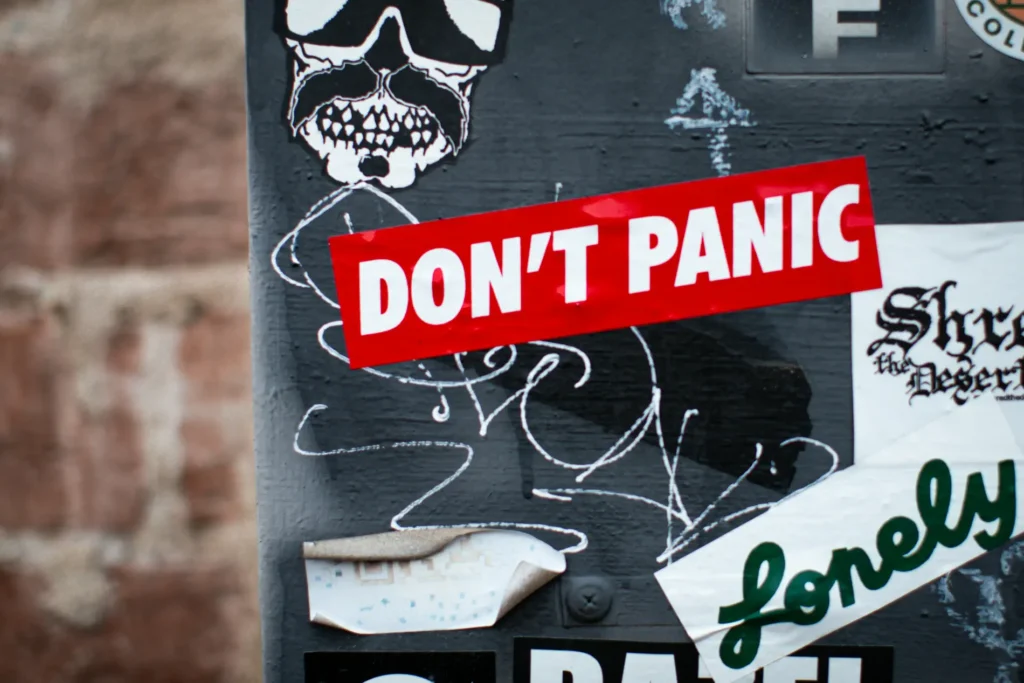
Remembering
I don’t know about you, but my mind is rarely quiet. I’ve had that since I was a child, and I’m not used to anything else. Since I found out that I have ADHD, a lot has fallen into place: the fleeting short-term memory, the raging stream of thoughts, and the tendency to always forget things that I really find important.
In this article I will tell you about all things that frustrates me – things you may recognize – and how I found a solution for it in the form of ToDoist. Do you have a nice flibbertigibbet-y ADHD brain like me? If so, it may be something for you, too.
For example: I’m in my house, measuring something with a tape measure. I say the number out loud to myself — ’32 centimeters’ — but by the time I get to my toolbox, the number has vanished. That’s not because I wasn’t paying attention – it’s just been overwritten by the next train of thoughts.
This could happen the same way at work. In the coffee corner, a colleague would come up to me and say: ‘Could you send that email we talked about?’ Of course, I’d say yes. But, later, at my desk, the conversation would be long forgotten. Only late that evening would I think: ‘Shit… I should have sent that email…’
Well, that often frustrated me, and when I’m frustrated, I always look for a systematic solution.
I used to have a whiteboard in my kitchen for this: call it my external memory. Groceries, chores, long-term things; it was all there. But, it wasn’t very convenient. As I was often out and about, and my ‘memory’ was at home, in the kitchen. Put a webcam on it? Have an expensive e-ink screen with custom software? – I had to do something.
So, I started looking for a platform that had it all in place. On June 9, 2018, I found ToDoist. To be honest, I was a bit cautious at first. Not because of privacy or anything — there were no secrets on my list. But what if I transferred everything, and it didn’t work? Or worse: that I wouldn’t be using it? My entire external memory in the depths of a platform I didn’t know anything of, yet?
Still, I took the plunge. I started with a free account and installed the app, put a widget on my phone screen. In one day, I diligently copied all the tasks from my whiteboard, just to give it a try. They appeared neatly on my phone’s home screen. To be on the safe side, I kept both systems in sync for another week. But soon I found myself everywhere looking at my app. The kitchen whiteboard was a thing of the past. I trusted the app, and so far — 7 years later — that trust has not been broken.
What I appreciate about Todoist is how it fits in with the way my mind works. Thanks to my profession, I was familiar with the Scrum methodology and therefore used to splitting up tasks. Because ‘writing a blog and publishing it’ is not one task; it’s two. Writing takes a long time; publishing is a piece of cake. But if you combine those two tasks into one, it stays on your list forever. It’s disappointing, you every time you look at it, and it sucks energy. So: split it up, check it off separately, and continue.
Now I use Todoist every day. I trust it with all my brainwaves. Many people say ‘I’ll do that later,’ or — more often heard with ADHD — ‘I’ll [drop everything and] do it now or I’ll forget,’ — that’s no longer the case for me. With two taps on my screen, I tell the app: ‘return parcel tomorrow.’ Todoist takes “tomorrow” as a date, writes the rest down as a task, and voila: tomorrow I’ll get reminded of it. With a hashtag, I can even file it to a project, and give it an ultimate deadline. In short: it’s done, out of my head.
That’s what really makes me feel better. I don’t want to burden my memory with small things. I want to save my energy for thinking, planning, for creativity. Not for remembering that I have to buy cat food in three days.
And, what I secretly like: people find me thoughtful (ADHD goals!) — while I owe that to ToDoist. If someone says: ‘My cat was sick indeed, … but I’m busy now – ask me next week’, I literally type: ‘Next week: ask Lisa about her sick cat.’ And in a week, I get a reminder. For me, it’s just a well-oiled system, but it does actually feel good when someone says: ‘How sweet that you remembered’. I just think it’s sweet of ToDoist that it allows me to be as thoughtful as neurotypical people can be.
Once, I even used ToDoist in a team setting. Together with a friend, I converted a camper van. We used a shared project, set up columns like in a scrum board, and worked on it together. Super clear. I would do it again any day.
And that’s also how I keep track of my job applications. When I send a letter, I immediately dictate a note: ‘In a week, follow up on application eData.’ Of course, on that day the next week, I call them up. Not because I remembered by heart, but because ToDoist allows me to look super organized. Magic. ToDoist can even remind you me a specific time, but for that I personally use an alarm clock on my phone.
What I like about ToDoist is that it’s not a rigid to-do list, but a smart extension of my ever-racing brain. It gives me peace, satisfaction, and you could even see it as a dopamine hit. Checking off all those tasks: a sprint completed. At the end of my tasks, I ask myself: ‘Am I really allowed to do nothing now? Was that all?’ And yes, that’s allowed. Just like Scrum, I achieved my sprint, and that can be — modestly — celebrated.
Since 2018, I have never worked a day without it. I would recommend it to you too, especially if you notice that your head is just as full of impressions, thoughts and small tasks as mine. It doesn’t work miracles. You have to honestly create tasks and divide your days into short, achievable sprints. But if you do, it works as more than a reliable memory, outside your head.
Want to try ToDoist too? Do so via my link, and ToDoist will be happy for it.
